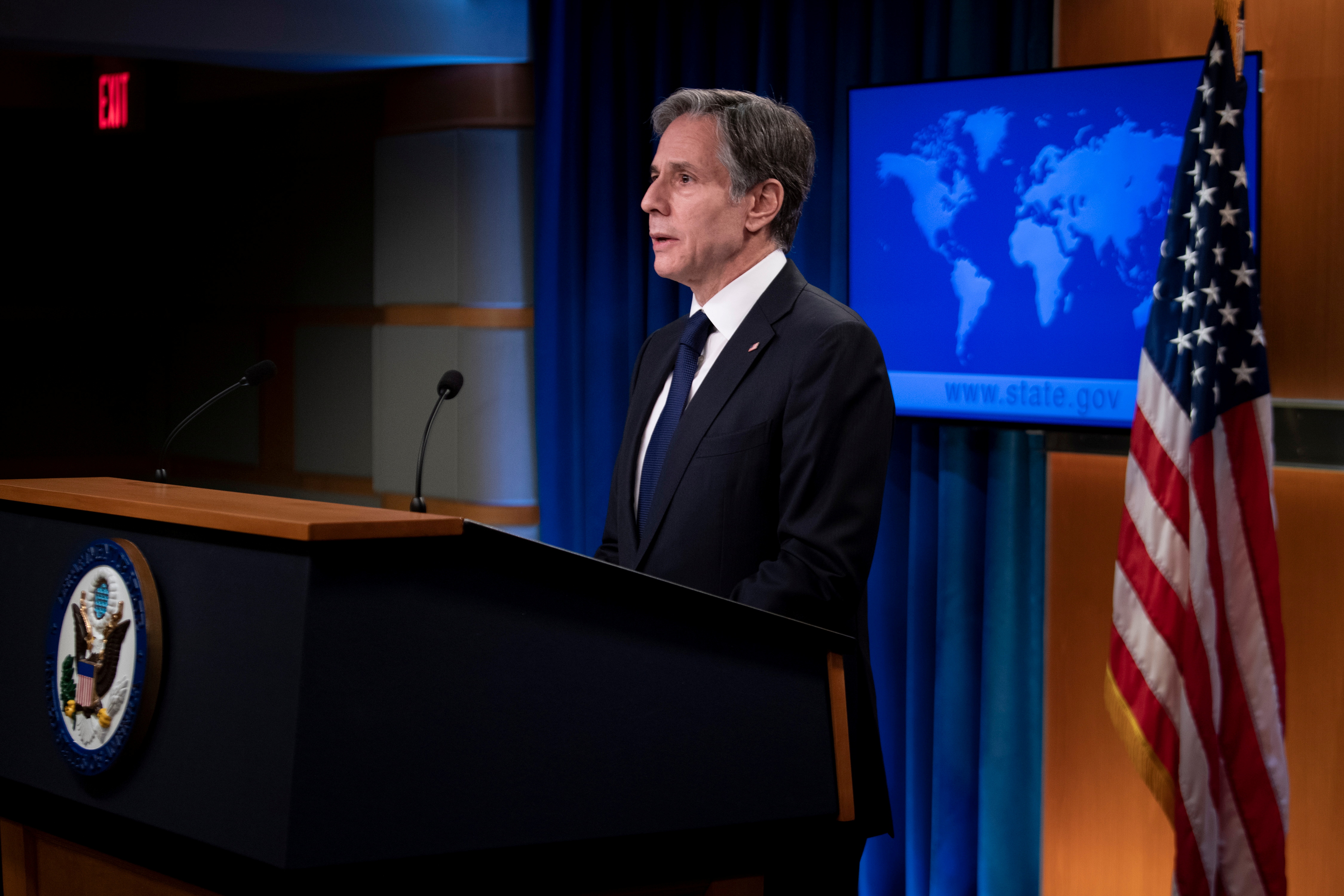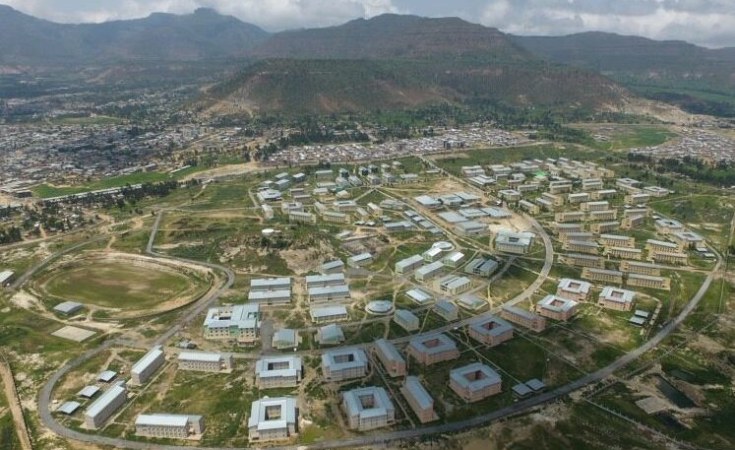On Tuesday, 3 August, the Ethiopian government forced two charities working in Tigray to leave – in so doing repeating the decision by the Ethiopian government in December 1985 [see below].

Then it was the military government, the Derg, that expelled Medecins Sans Frontieres.
Now it is Prime Minister Abiy Ahmed who has forced MSF out.
Both expulsions took place as thousands were facing famine.
Ethiopia Suspends Work of Two Aid Groups Active in Tigray

NAIROBI – Two international aid groups said Tuesday that the Ethiopian government had suspended part or all of their operations, while the United Nations humanitarian chief warned Ethiopian authorities that blanket accusations against aid workers in the country’s embattled Tigray region and elsewhere are dangerous and must stop.
The United Nations’ new Under-Secretary-General for Humanitarian Affairs Martin Griffiths addresses a news conference on the humanitarian crisis in Tigray after visiting the region, in Addis Ababa, Ethiopia, Aug. 3, 2021.Martin Griffiths spoke to reporters amid a new push to get more badly needed food and other supplies into Tigray, where hundreds of thousands of people face famine conditions and Ethiopia’s government has been accused of blocking assistance. He acknowledged that his own flights into and out of Tigray had difficulties with searches and delays.
Separately, the aid groups Doctors Without Borders and the Norwegian Refugee Council said Ethiopia’s government had suspended their operations on July 30. An NRC spokesman said the stated reasons were “public advocacy” and failure to obtain proper permissions for foreign staff and that all operations were suspended.
A Doctors Without Borders spokeswoman said the operations of the charity’s Dutch section, its largest in Ethiopia, were suspended for three months in the Tigray, Amhara, Gambella and Somali regions, and the group was “urgently seeking clarification from the authorities.”
Doctors Without Borders, also known by its French acronym MSF, warned of “dire consequences” in the regions where access to aid is already limited. MSF already had suspended operations in three major Tigray towns after three of their colleagues were killed by unknown attackers.
The Ethiopian government spokesman for the Tigray emergency task force, Redwan Hussein, alleged last month that aid groups are “playing a destructive role” in the nine-month conflict and even arming the Tigray forces that long dominated Ethiopia’s government before a falling-out with the current prime minister. Redwan didn’t respond to questions on Tuesday.
Such blanket allegations are unfair and need to be backed up by evidence, the U.N. humanitarian chief said.
Griffiths also told reporters that some progress had been made on aid delivery to Tigray after more than two weeks as 122 trucks with supplies had reached the region. The previous attempt at an aid convoy was attacked last month on the only operational land route into Tigray as fighting continues.
But some 100 such trucks are needed to enter Tigray every day, Griffiths said, adding the needs are “huge, they are urgent.”
FILE – In this Monday, Nov. 30, 2020 file photo, Ethiopia’s Prime Minister Abiy Ahmed responds to questions from members of parliament at the prime minister’s office in the capital Addis Ababa, Ethiopia.He said Ethiopian Prime Minister Abiy Ahmed during their talks asserted that he was trying to ensure more than one land route from other parts of Ethiopia into Tigray for aid. But a route from a neighboring country such as Sudan can be “politically sensitive,” Griffiths added.
The conflict recently spilled into Ethiopia’s neighboring Afar and Amhara regions after the Tigray forces rejected the unilateral cease-fire that Ethiopia’s government declared in June as its soldiers retreated. Now the Tigray forces have said they want Abiy out.
About 200,000 people in the Amhara region and 54,000 in Afar have been displaced by the insecurity, the U.N. humanitarian chief said.
On Wednesday, the administrator of the U.S. Agency for International Development, Samantha Power, is visiting Ethiopia in another push for better access to the Tigray region, which remains without phone, internet or banking services.
While Ethiopia’s government has blamed the blockage of aid on the Tigray forces, a senior USAID official last week told The Associated Press that the allegation is “100% not the case.”
EXPELLED DOCTORS ACCUSE ETHIOPIA
Source: Associated Press 4 December 1985
A French medical organization has been ordered to end its relief work in Ethiopia, and today the group’s president asserted that expulsion was the price for speaking out against Government policies that he said had killed 100,000 famine victims.
The Ethiopian Government announced Monday that it was halting the work there of Medecins Sans Frontieres, or Doctors Without Borders.
The Ethiopian Relief and Rehabilitation Commission accused the group of undermining the famine relief effort, lying, misquoting officials and engaging in a ”vicious media campaign.”
The organization’s president, Rony Brauman, speaking at a news conference here today, said aid organizations in Ethiopia were ”in one way taken hostage, becoming more or less accomplices” of the Government by staying silent.
France Deplores Move
The French Foreign Ministry today officially ”deplored” the expulsion and said the doctors had worked admirably in Ethiopia, saving thousands of lives.
Mr. Brauman insisted the program to resettle people from drought-prone northern Ethiopia to more fertile southern regions had so far cost an estimated 100,000 lives.
The Ethiopian Government hopes to move 1.5 million people south, contending that many of them would starve to death if left in the north.
An internal report provided by the medical team on Monday, only hours before the expulsion notice, suggested a death toll to date of 75,000 to 100,000. It warned that the resettlement program could kill 300,000 people if carried to completion – as many, it said, as the famine itself.
The report said Ethiopia’s resettlement program was designed to lower the population in the northern provinces where rebels are active. It also contended that the Marxist Government wanted to provide workers for new state farms.
”Each day dozens die in the transit camps,” Mr. Brauman said in an interview on Monday. ”These camps are like cesspools. There are people on top of one another who literally swim in excrement. It is abominable.”
Soldiers Are Accused
People also die in large numbers on the road to resettlement camps, he said, and survivors risk death in their first three months in camps unprepared to receive them.
He also said witnesses had reported that soldiers had beaten, imprisoned or killed some unwilling refugees.
In Addis Ababa, the Ethiopian capital, Michel Fizsbin, head of the organization’s local office, said: ”We are facing a situation where you speak out about what you see and then you have no other choice but to leave this country. We have seen a lot and each time we have made some noise.”
Tafari Wassen, the Ethiopian commission’s chief spokesman, said the French group would be given ”a reasonable time” to leave, but he did not specify a date.
The relief commission said it would take over the French team’s operations in northeastern Ethiopia. Mr. Fizsbin said he and his 29 colleagues could be ready to leave Ethiopia within a week.
Under a contract with the Government, the doctors were responsible for medical services for 50,000 people and ran a nutrition program for 10,000.





 h
h

























